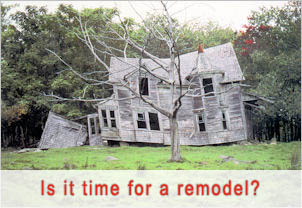
The short answer: yes, you can add a second story to your existing home if your building has the appropriate structure and local regulations permit it. So it’s no surprise that so many owners opt this route to add room without relocating. Adding a level entails testing your foundation, roof and walls to determine if they can support the additional weight. Local rules, building codes and permits have a big say in what is permitted. Costs, planning and timeline count. Collaborating with engineers and builders is paramount for safety and quality. To provide a taste of what’s to come, the meat below will outline steps, rules and tips for a project that goes off without a hitch.
Key Takeaways
- A thorough structural assessment is essential before planning a second-story addition, including evaluating the foundation, framing, and soil conditions with the help of qualified professionals.
- You must comply with building codes and zoning ordinances, so getting the necessary permits and consulting with officials can save you delays and legal hassles.
- Hiring an architect, structural engineer, and seasoned contractor can give you peace of mind that your project will be designed to be safe, functional, and integrate well with your existing home.
- Prudent budgeting and financial planning are essential, as expenses can range from construction and professional fees to permits and unexpected hidden costs.
- Think about the advantages — more space, more value — and the issues — construction headaches, perhaps having to move out temporarily — when deciding.
- Transparent communication and thorough project management during the construction process reduces delays and guarantees a successful second-story addition for houses everywhere.

Is Your Home Structurally Ready?
Adding a second story is a significant move for any home. Your current structure needs to be structurally sound to support the additional weight and comply with local regulations. Every aspect, from the foundation to the framing, has to be examined in detail to prevent hazards or expensive errors.
Foundation Assessment
The foundation is the support for all the weight above it. If it’s not hardy or deep enough, cracks or uneven settling can occur. Most older homes, particularly those constructed prior to update codes, may not have footing deep enough or reinforcing steel. You’ll need a structural engineer to test the foundation’s stability and look for deficiencies like large cracks or water damage. If it’s weak–think spalling or shifting–you’ll need repair, like underpinning or waterproofing. Document all findings and share them with your build team to make certain there are no steps skipped in later planning.
Framing Capacity
Framing of older homes is not constructed to hold a new floor. Wood framing from the early 1900’s may lack appropriate sheathing, which means a second story load could cause sagging or failure. A structural engineer can examine the existing beams and walls to determine if they are up to today’s load-bearing standards. Figuring out the load capacity is critical. If not, a retrofit may be necessary—say more studs or steel beams or thicker sheathing on the lower level. A professional will tell you if your framing requires an upgrade or complete replacement.
Soil Conditions
Soil beneath your home matters as much as the foundation itself. Loose or clay-heavy soils, which can shift with moisture, endanger the structure. Soil tests assist in determining whether the ground can withstand additional weight or if drainage is inadequate. If results are bad, you may have to enhance drainage or use alternative foundation supports. If soil conditions are detected, a basement could be more secure than a second floor.
Local Regulations
Review zoning regulations to understand any height restrictions and required setbacks. Permits are necessary to steer clear of legal problems. Your local building department can inform you of special requirements. Make sure to look for rule changes prior to beginning work.
Weighing The Decision
There’s opportunity and challenge in adding a second story to your home. It transforms your lifestyle, has an impact on your real estate value, and possibly demands a significant expenditure of both time and capital. Before you jump in, it’s wise to consider all your variables, from budget to building codes and family requirements.
Benefits of a Second Story:
- Extra bedrooms or living areas for a growing household
- Better views and more natural daylight
- Flexibility to redesign your space and floor plan
- Boost in property value and market appeal
- Option to stay in your neighborhood without moving
The Upside
More room is the most immediate advantage. A second floor gives you the option to throw on some additional bedrooms, a home office or another living room. This is perfect for families that need space to expand but want to avoid relocating.
If you reside in a location with gorgeous views or ample sunshine, a second story can provide you with enhanced views and increased natural light. New upper-level windows invite the sun, bathing your home in light. This update tends to make the room feel bigger and more spacious.
Secondly, a second story adds to your home’s square meters, which frequently adds to its value as well. If you sell, you’ll probably get a better resale price and more buyer attention. This shift can be particularly clever in areas where land is limited or costly.
Design freedom is another big plus. You can re-imagine the floor plan, incorporate balconies or even designate separate work and play spaces. A second story provides a clean canvas to fit your aesthetic and life.
The Downside
Costs can be steep—think $100-$300 per m2. You could be on the hook for structural modifications, permits or upgraded utilities.
When you’re building, life is hard. Dust, noise, and inaccessible rooms can make everyday living difficult, particularly with kids or animals. Some families get out of the house until the work is completed.
Older homes can expose hidden problems — unstable foundations, faulty wiring or old plumbing. Repairing these introduces both time and expense.
It takes months, from concept to completion. You’ll have to contend with builders, permits, and perhaps even tough zoning laws.
The Balance
A full cost-versus-benefit analysis is key, weighing short-term hassle against long-term gain. Consider your budget, your duration, and whether you can handle the disruption. Check local building codes and consult with pros who understand your region’s regulations.
Envision Your New Space
Knowing what you want in a second story defines the entire process. Adding a level can expand your home’s square footage, accommodate new requirements, and even increase its value. Sorting out whether you require additional bedrooms, an expanded lounge area, or a private study directs design and maintains clarity. Be sure to consult your local building codes and zoning before beginning.
Full Addition
A full second story provides the most space. That is, you can insert an entire floor complete with multiple bedrooms, bathrooms, or large open space. It’s a solid option for expanding families or anyone seeking additional room for work or hobbies. The style should coordinate with the rest of the house in order to maintain harmony. By using similar roof lines and window shapes, the addition really fits in well. Full additions, in particular, almost always increase a home’s value and usually make the project a good investment.
Partial Addition
Partial additions allow you to grow only where you need it most. A lot of homeowners opt to build out above a garage or cantilever over part of the house for an additional bedroom, office or bath. It can save money and time since you’re not constructing an entire new level. It implies less upheaval of your routine. The trick is selecting locations which provide utility without causing the house to appear lopsided or strange from outside.
Modular Option
Modular designs incorporate factory-built components that are delivered to your location and assembled quickly. This can reduce construction time and expenses since most of the construction is completed off-site. Modular alternatives maintain the site neater and more manageable, which is convenient if you intend to be at home during the construction. These builds can be modified with alternative layouts or finishes, but the choices are perhaps less open than traditional builds.
Seamless Integration
The new second floor has to LOOK and FEEL like it was from the original house. Coordinate the outside finish, roof design and window style for a seamless appearance. You want stairways to be located so that they’re convenient to access, but don’t segment important spaces. Preserving original elements–such as trim or moldings–makes the new space flow naturally with the original. Even tiny decisions have an impact.
Understand The Financial Scope
Second story additions are complex projects that extend your living space upward without pushing out the home’s footprint. These types of projects have real costs and require real planning. A comprehensive cost breakdown, trustworthy budgeting, and smart financing decisions are key to a realistic, successful build.
Cost Factors
A second-story addition will generally feature numerous direct and indirect expenses. Here is a checklist of standard items and estimated ranges:
Cost Component | Estimated Range (USD) |
Construction/Labor | $1,200–$2,500 per m² |
Architectural/Engineering | $2,000–$8,000 total |
Building Permits | $500–$3,000 |
Plumbing/Electrical/HVAC | $3,000–$10,000+ |
Materials | Variable, often rising |
Temporary Living | $1,500–$5,000+ |
For a standard 50 m2 addition, the total project cost varies between $60,000 to $125,000, based on location and design specifics. Plumbing and HVAC upgrades tend to add extra fees, particularly for older homes, since those must be extended or replaced. Electrical rewiring is typically necessary for safety and code reasons. Material expenses such as lumber, insulation and roofing can shift throughout the work, so those initial quotes are important, but not final.
Securing Funds
Financing options for major home additions vary, each with distinct pros and cons:
Financing Option | Pros | Cons |
Home Equity Loan | Lower rates, longer terms | Tied to home value, closing costs |
Second Mortgage | Keeps main mortgage intact | Additional monthly payment |
RenoFi Loan | Higher limits, flexible terms | Newer product, limited availability |
Personal Loan/Credit Card | Fast access, unsecured | High rates, low borrowing power |
Budgeting for a second-story addition means saving regularly and budgeting at least 10%–20% additional for unexpected expenses. Think about the financial scope—most homes add serious value post-renovations, but the market isn’t the same everywhere. A good financial advisor or mortgage specialist can help you figure out the best funding path for your situation.
Hidden Expenses
Unanticipated expenses are guaranteed with projects of this magnitude. Construction can expose structural issues — like foundation troubles or old framing — that need costly mending. Save some room for temporary living expenses if the house is not livable – these can put a big drain on your budget. Never forget the contingency reserve — usually 10%–20% of the total — to address delays, rule changes, or parts shortages.

Navigating The Construction Journey
Turning your home into a two-story dwelling is a complicated journey that occurs over a sequence of clear milestones. Every stage requires strategy, engineering expertise, and open communication to prevent errors. Homeowners, architects and contractors closely track progress and adapt to emerging challenges. Knowing the common path can help establish expectations, reduce surprises, and maintain your project on budget and on time.
- Assess structural feasibility: Check if your home’s foundation and framing can support the new load. Engage a structural engineer for a thorough evaluation.
- Design phase: Develop detailed architectural plans, including system upgrades for plumbing and electrical needs. This stage alone can take as many as three months.
- Secure permits: Research local building codes and zoning restrictions, which could impact or limit your plans. Submit necessary paperwork and wait for approvals prior to work starting.
- Site preparation: Clear the site, make landscaping changes, and ensure utilities remain accessible.
- Construction: Actual building begins. Check in with your contractor regularly for updates and watch the progress for all major system upgrades.
- Finishing work: Interior finishing, inspections, and final touches may take an extra month or two.
- Move-in: Final walkthrough, address any punch list items, and prepare to occupy the new space.
- Budget management: Set aside a 10-20% contingency to cover unexpected costs.
Project Timeline
A hard-nosed project schedule of course. Begin by phase—from design to move-in, and assign realistic deadlines. Second-story additions will stretch over months, if you have to wait on permits or weather delays.
Being on schedule is being on top of progress frequently. Match actual progress against your initial plan. If something takes longer than expected—like system upgrades or inspections—refresh your timeline. Delays are par for the course, so flexibility is crucial.
Temporary Living
- Short-term rental apartments
- Hotel stays for several weeks at a time
- Staying with relatives or friends
- Renting an extended-stay unit
- On-site modular units (where permitted)
Determine what works for you and your lifestyle and budget. Packing and shipping stuff on top of that adds expense and anxiety, so think through the logistics ahead of time.
Plan for this in advance, it tends to contribute a significant amount to costs, particularly on extended construction.
Site Preparation
Pre-construction, clean debris and secure the site. Safety comes first for workers and residents.
Collaborate with your contractor to establish secure access and storage for materials. If you have to alter landscaping, do it pre-build.
Have utility access all along. Schedule temporary shutoff or reroutes accordingly.
Keep pets and children away from the active site.
Conclusion
You can’t just dream of adding a second story. Solid plans and the right team get your project off to the right start. Your house requires a sturdy foundation. Engineers verify that your walls and soil can support the additional weight. Basic things like looking up local regulations early in the process can save you hours of wasted time and stress. They add up quickly. Clear talk with your builder keeps you on track. Minor design or material changes have a way of shifting your budget. Building up gives you more room and a clean new aesthetic. Prepared to get going? Keep your objectives at heart, solicit regular updates from your team, and remain receptive to fresh insights. Tell us your story or questions below. Your experience can assist others to move forward.
Frequently Asked Questions
1. Can I add a second story to any home?
Not every home is capable of supporting a second story. Adding a story onto an existing home foundation framing a structural evaluation by an engineer is necessary to ascertain if your foundation and framing could support the additional load.
2. What professionals do I need for a second story addition?
You need a licensed architect, a structural engineer and a seasoned contractor. Local building authorities might need permits and inspections during the project.
3. How much does it cost to add a second story?
Prices differ by region, materials and floor plan. Figure several thousand dollars a square meter, on average. Make sure you always get an itemized estimate before you begin.
4. How long does construction take?
Second-story additions can take months to build. Timelines vary based on project complexity, weather, and permit approvals. Prepare for potential holdups.
5. Will I need to move out during construction?
You might have to move out, at least in the short term, particularly if utilities are down or if the home is deemed unsafe. Consult your contractor for the optimal plan for you.
6. What permits or approvals do I need?
Nearly all cities need building permits and inspections for 2nd story additions. Make sure your local regs are ok and all the paperwork in order before you begin.
7. How do I ensure my home remains energy efficient?
Be sure to incorporate quality insulation, energy efficient windows and sustainable materials into your new space. Ask the pros for energy-coffee advice.
Your Dream Home Addition Built by Mares & Dow Construction & Skylights – Let’s Create the Extra Space You’ve Been Dreaming Of
Expand your home’s potential and enhance everyday living with a custom home addition from Mares & Dow Construction & Skylights. With over 40 years of construction experience, we specialize in high-quality additions that seamlessly integrate with your existing structure and lifestyle needs.
Whether you’re planning a new primary suite, second-story expansion, or an in-law unit, we tailor each addition to match your vision, your home’s architecture, and your long-term goals.
Key benefits of our general home addition services include:
• Adding valuable square footage for growing families or multi-use living
• Increasing your property’s value with expert design and construction
• Creating energy-efficient, modern living spaces tailored to your needs
Proudly serving Contra Costa County—including Alamo, Danville, Orinda, Martinez, and San Ramon—Mares & Dow Construction & Skylights is your trusted partner for functional, beautiful, and lasting home additions.
Contact Mares & Dow Construction & Skylights today for a free, no-obligation quote and let’s build your ideal home addition together.
Disclaimer
The materials available on this website are for informational and educational purposes only and are not intended to provide construction, legal, or professional advice. You should consult with a qualified general contractor or industry professional for advice concerning any specific construction project, remodeling plan, or structural concern. Do not act or refrain from acting based on any content included on this site without seeking appropriate professional guidance. The information presented on this website may not reflect the most current building codes, regulations, or industry best practices. No action should be taken in reliance on the information on this website. We disclaim all liability for actions taken or not taken based on any or all of the contents of this site to the fullest extent permitted by law.





 based on
based on 

